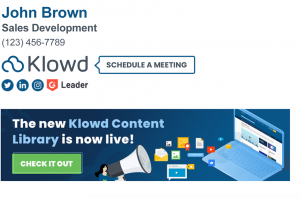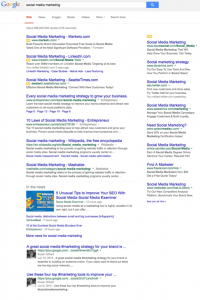CJO is essential to creating seamless customer experiences across all touchpoints. Here’s what you need to know.
The modern customer journey is complex, spanning multiple channels, devices and touchpoints as customers navigate researching and buying products and services. It’s also increasingly digital. The pandemic exacerbated the movement of B2B and B2C customers from in-person to online channels.
Two years after the Covid-19 hit, the customer split between online and offline channels was at 61% and 39% respectively versus 56% and 44% in 2020, according to Salesforce’s 5th State of the Connected Customer Report.
Providing a seamless customer experience across the many variables inherent with a multichannel customer journey requires a significant pivot in how businesses deal with customers. Customer Journey Orchestration (CJO) is designed to help you leverage customer data to deliver personalized experiences regardless of when, where, or how a customer interacts with your business.
Table of contents
What is customer journey orchestration?
Customer journey orchestration uses data and technology to determine the best way to interact with each customer across the customer buying journey. It leverages powerful data analysis and automation to understand each customer’s behavior, preferences, and purchase history. It spans online and offline channels, ensuring a good experience no matter how or where a customer interacts with you.
The goal with CJO is to recognize a customer’s needs at every stage of the buying journey and deliver the most relevant content, messaging, and service to move the customer further along in their buying cycle.
The Customer Data Platform (CDP) Resource defines CJO as: “The process of delivering personalized experiences along the customer journey that lead to an optimal next step.”
Gartner defines the “customer journey” as “a tool that helps marketers understand the series of connected experiences that customers desire and needs — whether that be completing a desired task or traversing the end-to-end journey from prospect to customer to loyal advocate.”
Why marketers should care
Today’s customer journeys are undergoing a major transformation as experiences become more hybrid and digital becomes more embedded into how customers purchase products or services.
Customers jump from device to device and channel to channel which makes the journey hard to predict. To keep these journeys seamless, marketers must be able to gather and interpret customer data from across channels.
Customer journey mapping is a part of this process. It helps marketers predict, visualize and optimize the customer buying journey for the various channels.
Who uses CJO tools?
CJO tools benefit many customer-facing teams within an organization, but it’s not just your marketing and sales teams that will work with (or be impacted) by this technology. Here’s a breakdown of how different departments use and work with CJO tools:
- Marketing/Experience: CMOs, CXMs, marketing directors, analysts and planners use CJO platforms and tools to develop and execute customer-centric campaigns, engage with customers in real-time, analyze data and performance metrics, and measure the impact of each interaction.
- Sales: Sales teams, particularly in B2B, use CJO tech to connect with prospects across a multifaceted buying journey, coordinate messaging with marketing teams, optimize the sales approach, and keep messaging and communication consistent across channels and interactions.
- Customer Service: Customer service teams use CJO tools for responding to customer queries, closing service gaps, capturing valuable feedback and providing appropriate self-service options for customers who want to solve issues on their own.
- IT/Development: IT and development teams work on the back end to create seamless integrations with other systems, implement and optimize software, align the CJO infrastructure with business objectives, and ensure there’s adequate compliance and security procedures in place to protect customer data.
- Executive/Leadership: Achieving seamless customer journey orchestration is a big endeavor both in terms of technology and company philosophy. You need leadership to steer the ship by aligning CJO initiatives with short and long-term objectives, understanding the potential of the technology, making the appropriate investments in budget and staffing, and providing ongoing support as the technology is onboarded and implemented.
What technology enables CJO?
CJO is a data-driven approach to marketing, so it makes sense that the tools and tech that enable it focus on capturing, unifying, processing, and analyzing data. But there’s more to providing a seamless customer journey than just data. Here are some of the tools involved
- Customer data platforms: Platforms like Segment and Optimove provide an aggregated view of customer data and help marketers create integrated customer profiles that can be used for personalization and segmentation.
- Marketing automation tools: Customer journeys require automated communication. Tools like HubSpot and Marketo are used to create personalized messaging based on customer behavior, preferences and other data points.
- Customer relationship management (CRM) software: The relationship between customer and brand continues even after the buying journey has ended. CRM platforms like Salesforce and SugarCRM can manage relationships, track customer interactions and activity, and foster ongoing engagement.
- Analytics platforms: Data analysis, reports, and insights are typically baked into marketing automation tools, but standalone analytics and software like Google Analytics, Mixpanel, and Adobe Analytics can dig deeper, providing insights for every team involved in the CJO process.
- Journey mapping tools: Customer journey mapping tools like Lucidchart and Smaply help you visualize the customer experience with templates, diagrams, and graphics that produce a visual representation of the customer journey.
- Customer Journey Orchestration Platforms: Enterprise CJO platforms like Alterian and Cheetah Digital bundle many of the capabilities from the above tools into one tool. Typical CJO platform capabilities include data gathering across channels/touchpoints, AI/ML-driven analysis and testing, customer journey visualization (e.g., journey mapping), and real-time campaign/journey activation (e.g., initiating chats, serving ads, etc.)
How does CJO help marketers?
Good experience matters to customers, often more than the products you sell or the services you provide. Forty-four percent of U.S. consumers said there was no excuse for a poor customer experience, according to a survey by Telus International.
Respondents were unforgiving about this, noting that price, convenience and brand loyalty won’t get you off the hook if they have a bad interaction. In fact, 60% of respondents said they would rather sit in traffic than deal with poor service.
That’s why these CJO benefits are particularly important:
- It enables businesses to create a single view of the customer. This the only reliable way to provide a good customer experience across an increasingly multifaceted buying journey.
- It puts customers first, looking at the whole buying journey rather than pieces of it. You can provide customers with personalized information, connect them with people and resources, and make their lives easier by offering the right solutions in real time.
- It empowers customers to find the information they need or want in the way: and on the channel: that works best for them.
- It improves efficiency by keeping your entire organization focused on the same business objectives, eliminating data silos, streamlining processes, and reducing repetitive or redundant tasks.
What’s next for CJO?
Customer journey orchestration is evolving and growing more popular among businesses, with the market projected to reach over $ 46 billion by 2030. It’s an approach that promises significant benefits for businesses and customers alike. Organizations implementing customer journey orchestration have achieved revenue gains of 10-20%, cost reductions of 15-25%, and customer advocacy score improvements of 20-40 points.
But making it work often entails big changes—and investments—in data, decisioning, and delivery capabilities. You need the right tools in place before you can deliver cross-channel, real-time personalized experiences, consistently across all consumer touchpoints.
Meeting customer expectations for great experiences is no longer optional. It’s a critical aspect of how businesses operate. Orchestrating seamless multichannel customer interactions is the best way to build good, lasting relationships with your customers. A strong customer journey orchestration approach also makes it easier to scale: and pivot: when customer behaviors and demands inevitably change.
The post Customer journey orchestration: What it is and why marketers should care appeared first on MarTech.
MarTech(11)







